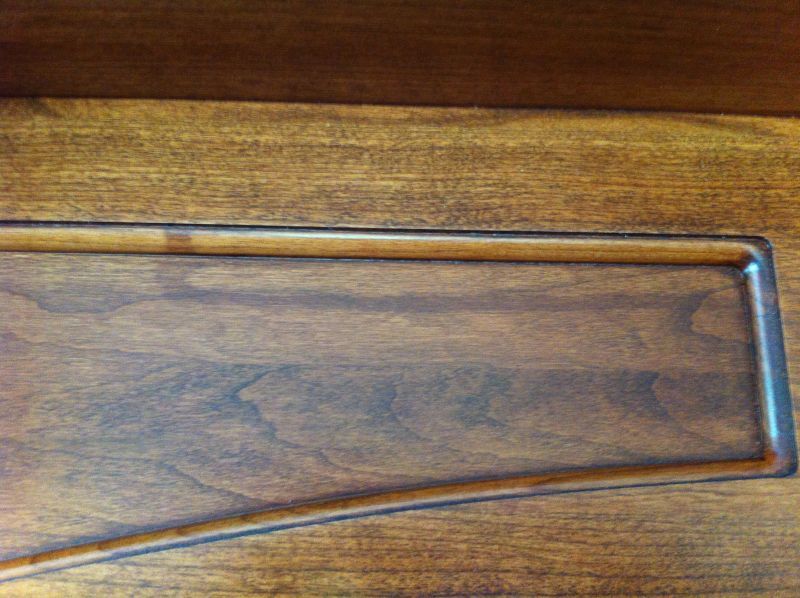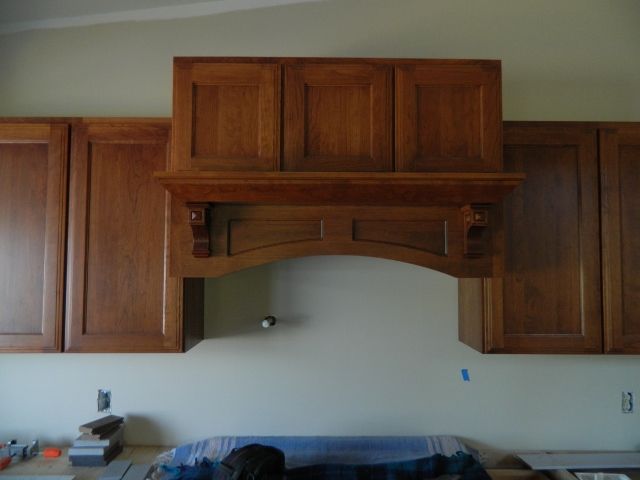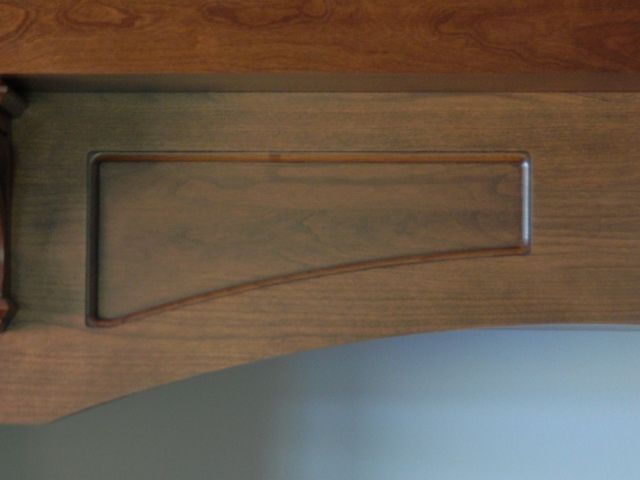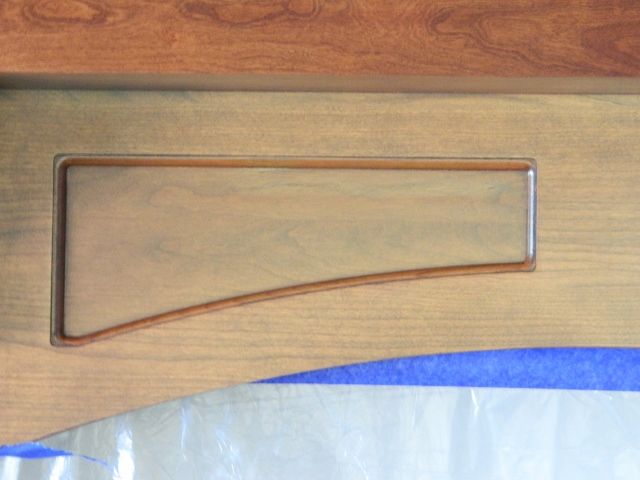Question
WOODWEB Member:
This cabinet manufacturer told my client that this is burn or heat damage to the stove hood. I have not seen this piece yet in person, except for the photos. What do you guys think as far as possible damage cause and repair methods?

Forum Responses
(Finishing Forum)
From Paul Snyder, forum technical advisor:
What damage? Are you talking about the glaze?
Not sure what your role is in this but if I were to be asked to diagnose it, the first thing is to figure out if that dark area is on top of or underneath the topcoat. The part that is interesting to me is how it looks like whatever it was ran down but then took a 90 degree turn to the right across the panel, which is strange.
Did the client confirm thearea was not on the panel when originally installed?
With no other information if someone asked me to guess what caused it I would think the most likely cause was there was excess glaze in the profile that ran down the bead detail and onto the panel, then it was clear coated afterwards. If it is on top of the coating, it should be able to be scuffed out and reshot with a clear coat.
I'm going out to assess and repair this week. I get paid either way but both manufacturer and customer will know my determination clearly upon completion.
I appreciate your response and hope it's on top of the clear coat. That would make for a good paying, quick repair indeed.
However, let's say this is chemical damage or in fact scorched wood. How would you approach the repair? Is there an easy way to remove darkened wood? I've repaired cigarette burns on a birch table before, and god was that alot of sanding. Could the area be bleached and refinished instead?
You can also get the same effect by wetting the bare wood before the staining process. The swelled wood fibers absorb more stain. Anyone that ever had a drip of sweat get on the bare wood they were staining can testify to the dark splash mark it creates.
If the dark streak was created during one of the coloring steps, the only solution I would attempt is to refinish the panel. Removing the dark streak and replacing the color and blending it in is impractical.
So that leads us to chemical - what type of chemical can cause the effect we see in the picture? It would be hard for the chemical to be liquid because of gravity.
It would certainly be nice to have a picture that panned out just a little bit so I could get a good look at the surrounding rails and stiles. Until then I am sticking with either the stain or the glaze being the issue, or some moisture got on it at some point in the finishing process.


